 Start Here, Though It’s Not the Beginning of the Story
Start Here, Though It’s Not the Beginning of the Story
Since the inception of new media and its offspring, social media, individuals and groups with a mind toward political, social, and cultural change have debated the merits of this new digital form of activism. With critics coining terms such as “clicktivism” and “slacktivism,” it’s clear to see that digital activism isn’t nearly as universally valued as is direct action or boots-on-the-ground (BoTG) activism.
Is this because of a generational divide between activists, with younger people seemingly willing to accept engagement in online forums as valuable, while older generations do not? Or, is it because the value of activism is measured exclusively by the end result: change? If we are using change as a metric, can’t nearly any form of activism be labeled a success—or failure—depending on who is assessing? I would argue that acquisition of new information is a change in educational status, that adoption of a position is a change in heart and mind, that asking friends and followers to care about something you care about is a change in degree of engagement. And, what if asking them to care drives them to actually do something?
The reality is that the Internet is changing the way we do business in all areas of our lives. We are shopping, working, socializing, and even finding love interests in the online world. In 2013, for example, U.S. retailers saw a 50% decline in traffic to their brick and mortar stores during the holiday shopping season and a 10% increase in their already robust online traffic (Walker, 2014). In the dating world, 38% of those currently “single and looking for a partner” have used an online dating site (Smith & Duggan, 2013). Twenty-three percent of online daters say they have found a long term relationship or marriage through a digitally mediated space like a dating site (Smith & Duggan, 2013). The Internet exposes the limitless options we seem to have. Consumers are using the Internet to make more informed buying decisions, and businesses use the Internet and social networking systems to both market products and services and elicit feedback from their customers. Fifty-seven percent of ads shown during the 2014 Super Bowl, for example, displayed an associated hashtag, reflecting an intent to drive customers to interact with a company via social media; this was a 50% increase from the use of hashtags in the 2013 Super Bowl commercials (Sullivan, 2014). The dramatic increase in activity in the online world signifies awareness of the convenience, effectiveness, and efficiency of doing some things online instead of offline.
The participatory nature of Web 2.0 has also marked an interesting evolution in engagement and activism. Because of access, convenience, and simplicity of use, the digital realm invites participation from those who might not otherwise be compelled—or able—to participate in person.
Several recent studies from the Pew Internet and American Life Project—“Social Media and Political Engagement” (Rainie, Smith, Schlozman, Brady, & Verba, 2012), “Civic Engagement in the Digital Age,” (Smith, 2014), and “Who’s Not Online and Why,” (Zickuhr, 2013)—demonstrated both interest and technological opportunity to engage in cybercitizenship1 activities.
The Pew surveys on engagement noted that social networking service (SNS) users do see social media as a suitable forum for engaging in the public sphere. In fact, Pew found that 39% of all American adults have already used social media for civic or political purposes (Rainie et al., 2012). Since 86% of adult Americans use the Internet, 73% of those are SNS users, and 56% of American adults now have a smartphone, it’s apparent that there is opportunity for engagement using these tools that are already so highly integrated into the lives of adults in this country (Zickuhr, 2013).
I recently conducted an informal survey of my own Twitter followers hoping to determine their attitudes toward social media as a forum for civic and political engagement. The findings of my survey amplify those of the Pew engagement surveys, ultimately pointing to both desire and opportunity, an atmosphere ripe for digital activism. Here are some of the findings:
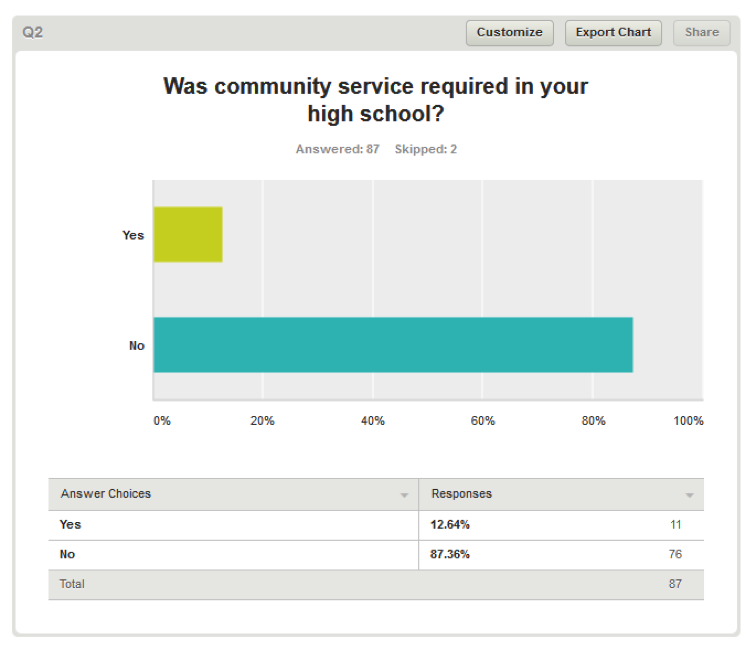
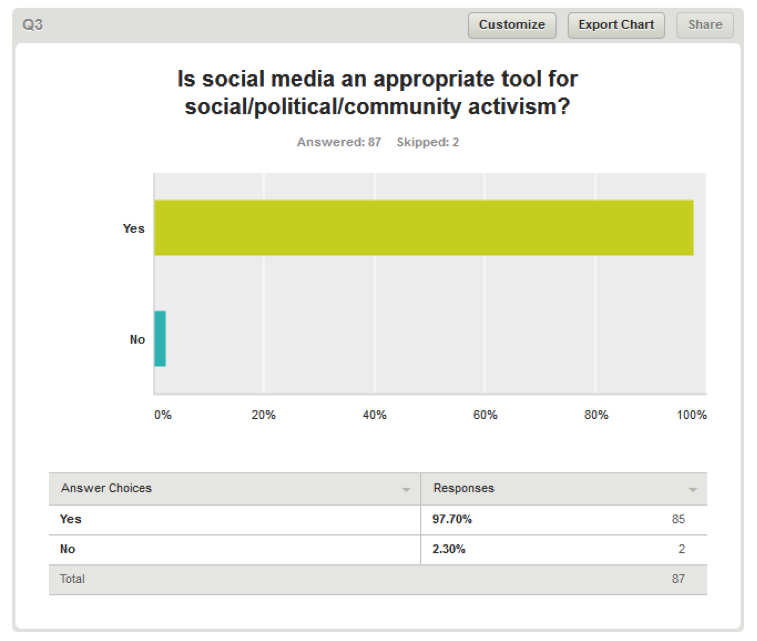
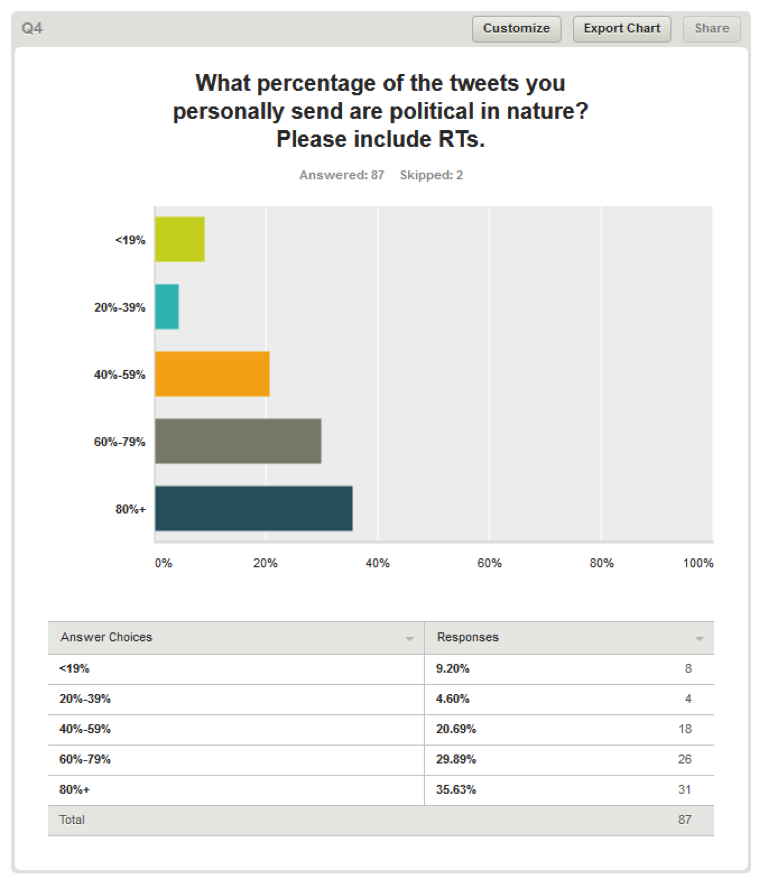
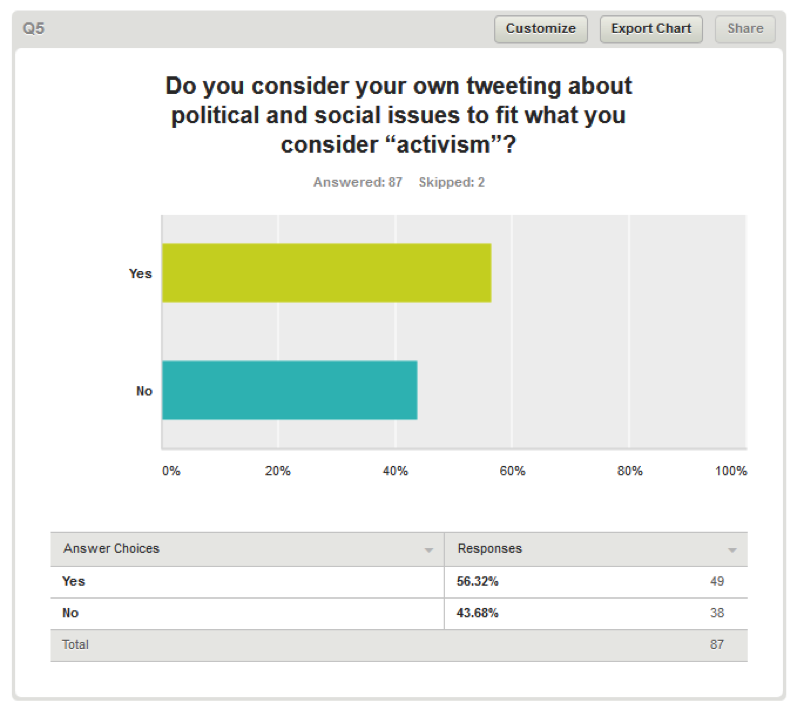
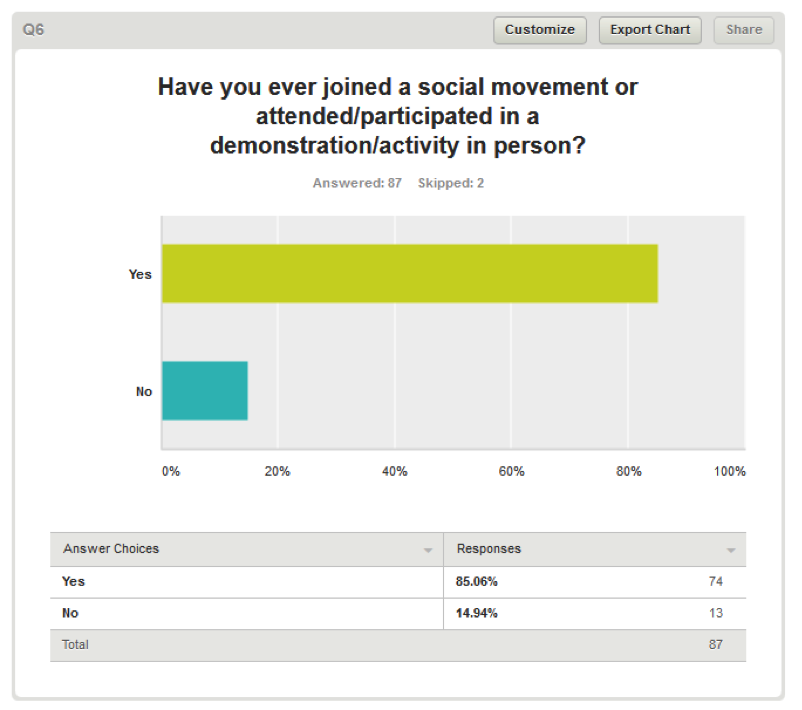
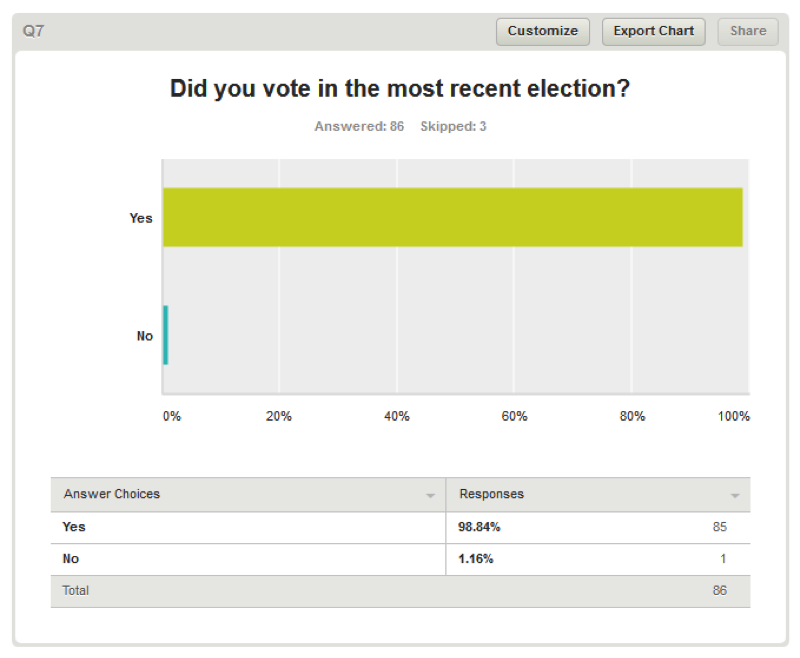
There were 87 responses to the survey with ages ranging from 17-70, and while all respondents were already active SNS users, it is safe to say that their lived experiences with education, activism, and social media are quite diverse. Through this brief survey, I discovered that community service had been required in high school for only 13% of the respondents. While a shocking majority (97%) viewed social media as an appropriate tool for social/political/community activism, and 35% of respondents said that 80% or more of their tweets and retweets were political in nature, only a little more than half of those surveyed said they considered such tweeting on issues to fit what they considered activism. This is an interesting piece of information, particularly since so many qualified social media as a tool for activism. This reluctance to identify their political engagement online as activism could reflect an outdated definition of activism or an awareness of the limitations of the proverbial echo chamber or it could simply be a reaction to the public perception of social media activism or advocacy as slacktivism.
The reason for the discrepancy between what the respondents are actually doing and what they call it is something I would like to understand further, particularly in light of the fact that 85% of respondents also said they have joined a social movement or attended a demonstration in person, and 98% said they voted in the most recent election (the one who didn’t vote was not yet legally eligible), so they are obviously a civically and politically motivated group. These findings certainly aren’t scientific, but I think they tell a story that is being largely overlooked by critics of social media activism. The desire and willingness is out there. The work is being done. The forum is valued by those who are doing the work. But there is a disconnect in labeling the work as activism.
This discrepancy presents tremendous opportunity for those who teach rhetoric and composition, civic engagement and service learning, community literacy and public writing, even technical communication. We are in a position to shape understanding, perception, agency, and efficacy surrounding the use of public rhetoric, and we should not ignore the digital as a means to accomplish those goals. One way to overcome this potential obstacle in labeling online action as activism could be for pedagogues to expand their civic, public, and new media writing lessons to include digital civic engagement.
While we might not ever see digital activism replace BoTG efforts, any more than we might see online dating replace meeting a romantic prospect in an offline public space (a meatspace), there is no doubt that Internet and mobile technology are changing the face of activism.2 Whether these tools are harnessed for messaging or mobilization of traditional BoTG activism, the reality is that digital and digitally-enhanced activism are here to stay.